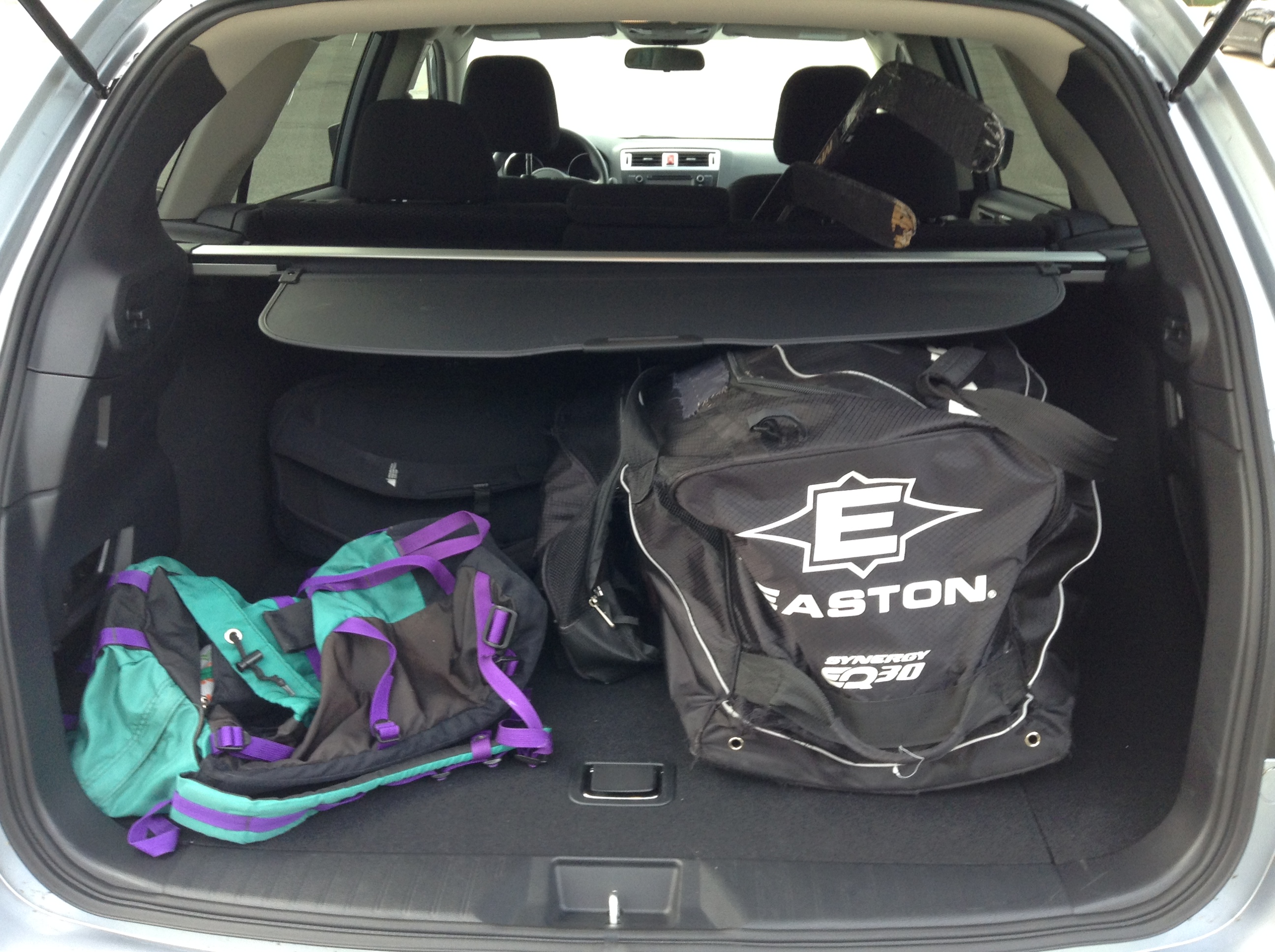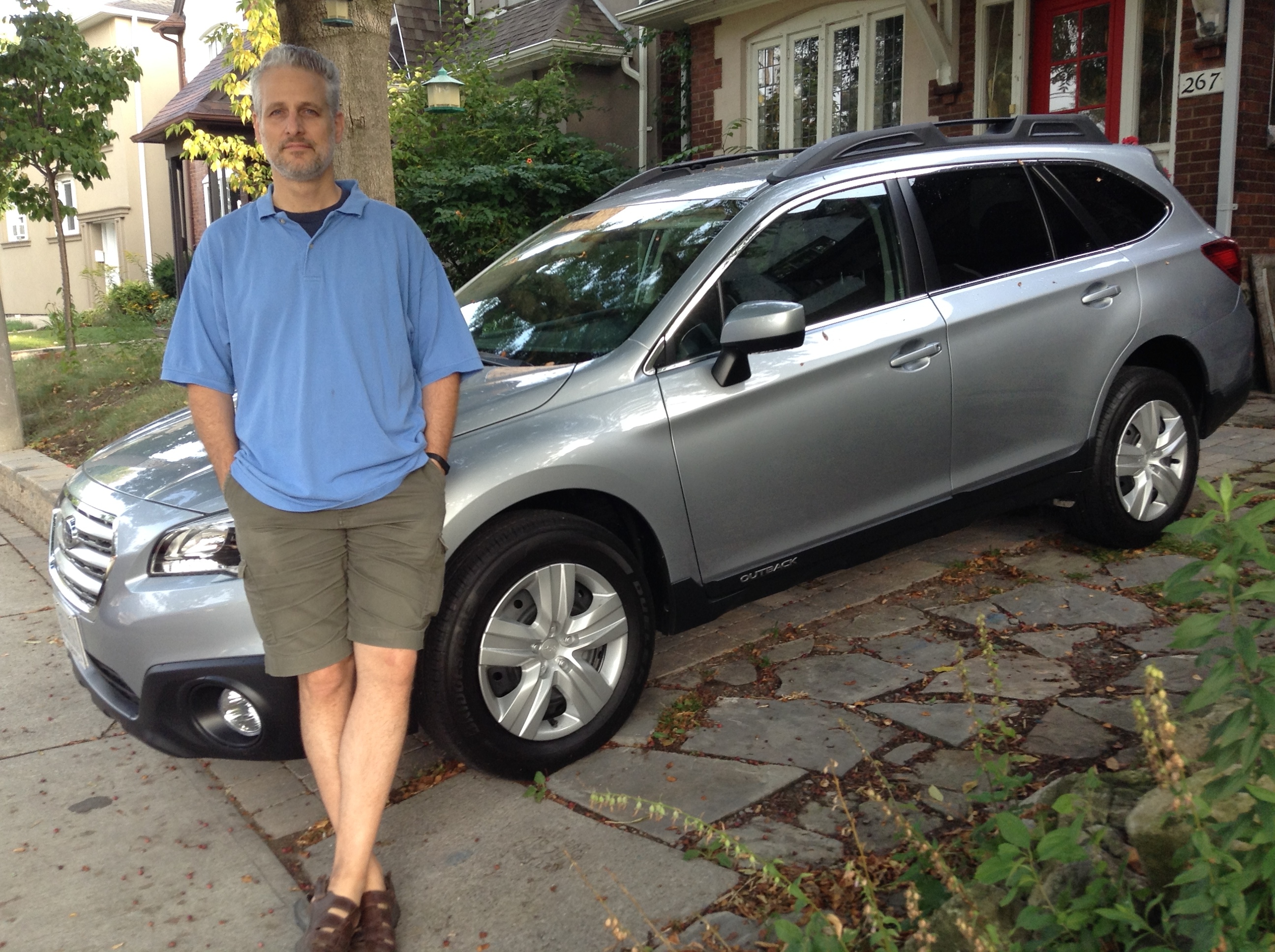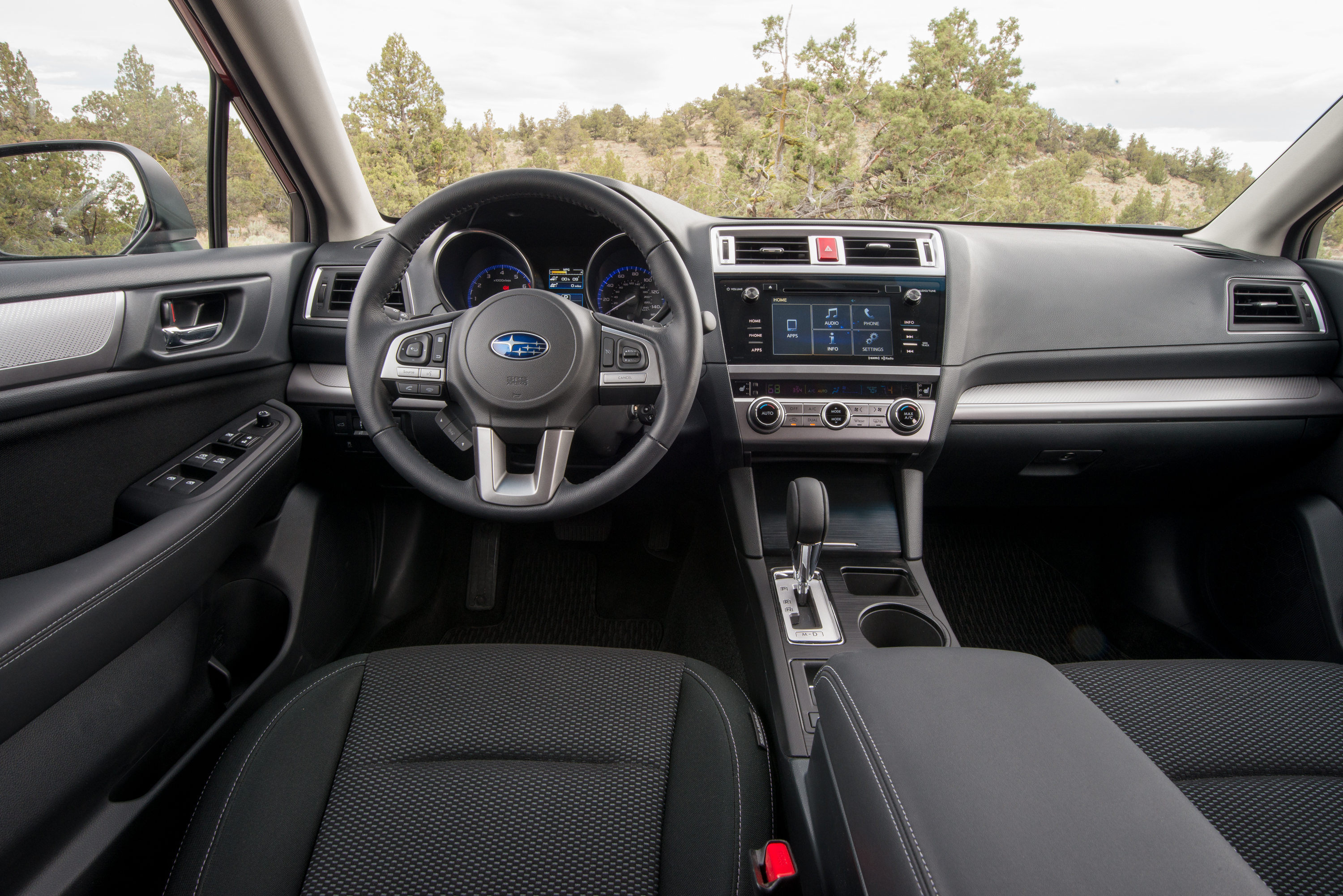Driving south on Toronto’s Royal York Road one morning, I saw over the roof of a decade-old Subaru Forester in front of me, the blatantly utilitarian shape having since given way to today’s modern SUV appearance.
This sighting gave me pause. You see, I was driving a vehicle I once considered smaller in its prior iterations: a 2015 Subaru Outback.
First impressions
The Outback, which has also grown over time, is still a utilitarian vehicle, albeit with more design flair thanks to design touches like the near-vertical front grill and clean lines sweeping from front to back.
Speaking of those lines, I’m glad Subaru kept the window line parallel to the ground all the way back to the hatch. Upward-sloping rooflines came into vogue, if memory serves, around 2003 on some crossovers. This one design element proved eye-catching to the point that many vehicle manufacturers put it into their offerings too. It also reduces visibility by shrinking the side and rear windows, making backup cameras almost as necessary as seat belts.
(I’m told, by the way, that backup cameras are making their way into every new Subaru. The whole car industry is moving in this direction. Common sense prevails.)
Anyway, about that window line: driving the Outback, I could twist my head around and feel as though I could see lots more out the side and rear windows than what I’m used to when I drive other crossovers. That’s a welcome victory over needless, follow-the-pack design, which has never been a Subaru trait.
Driving experience
The Outback provided all the power I needed to get around town, or on the highway. The 2.5L 4-cylinder boxer engine produces 175 horsepower at 5,800 RPM and the Suby transferred said power to the pavement through its optional CVT (MSRP on my CVT-equipped Outback: $29,295) and all four wheels, even when taking corners a tad too fast. It’s a confidence-inspiring feeling. It also reminded me to schedule future Suby reviews for the months of December, January and February, when I can use the vehicle to tackle winter driving conditions.
The Outback’s gauge told me I averaged about 10.5 litres per 100 km. You might do better if you don’t get stuck in stop-and-go traffic the way I boneheadedly did one afternoon for an hour or so.
As with the Forester and the XV Crosstrek, the Outback features paddle shifters that let drivers shoot through 6 preprogrammed gears. On a CVT, with its limitless number of gears, this seems a little odd. I’d opt for the best possible fuel economy and let the CVT do the shifting for me, but Subaru reps tell me some of their customers want the “sporty” feel of using gears. Then there’s the story of a driver who has had her Subaru for two years and has yet to realize it has paddle shifters. I think she’s not missing out, but to each his (or her) own.
Cabin
The ample headroom in my tester was augmented by the lack of a moonroof, a feature I increasingly consider to be as useless as paddle shifters on a CVT-equipped vehicle. (In case you’re wondering by now, I’m sure I’ve written “Hey you dratted kids – get off my lawn!” elsewhere on my website.)
All the creature comforts were there, from a fully adjustable driver’s seat to well-laid-out cabin controls to a head unit that played nicely with my iPod Touch thanks to its MediaHub iPod integration.
Hockey bag test
Just for fun, I put the bag in lengthwise. This left room for another fully-packed hockey bag right beside it, and the rear seats were still up. Remove the retractable cargo cover and one might pile another couple of bags on top. I guess this is just another day at the office for the cabin design magicians at Subaru.

Note the ten inches or so of space between the fully-packed Easton hockey bag and the edge of the cargo area.
The handle on the right side of the base of the cargo door doubles as a temporary clothes rack while you arrange things in the cargo bay. I like the button Subaru puts at the base of the rear cargo door of some models (push the button, the door closes on its own) but that’s a minor quibble at best.
Infotainment system
Getting back to Subaru’s take on Apple iOS compatibility: like the rest of the vehicle, MediaHub is simple and well-laid-out. Pairing the iPod Touch to the vehicle made my audio collections appear on the 6.2-inch touchscreen. Minor complaint: I had to wait between five and ten seconds after starting the vehicle before the iPod and the Suby showed that they were on speaking terms, but the relationship was a beautiful one for the rest of each drive.
An icon on the touchscreen (and on a button mounted on the steering wheel) resembles a computer file hierarchy. This button turns the iOS display collection into a series of hierarchies. Touching the collection on the screen brought up “sub-collections” (sub-folders in computer file parlance) or track selections, while a back button moved the screen back up the hierarchy. Anybody who has ever navigated Windows Explorer or the Mac Finder ought to understand this system quickly.
Starlink
Subaru has recently launched Starlink in Canada. Among other features, Starlink lets Subaru owners use 3rd-party streaming apps with the Subaru sound system. (Owners need to install the Starlink app plus the supported apps on their smartphones to enable this feature.)
I see at least two shortcomings with Starlink:
- If you don’t have a generous (i.e. unlimited) data plan on your phone, you might not want to face the charges that hit you after a month of streaming music or news via your phone. You might just opt for ordinary or satellite radio and leave Starlink untouched. (The Outback comes with a three-month trial satellite radio subscription.)
- Starlink makes a few third-party smartphone apps work with the Subaru’s sound system. It doesn’t have to cover Apple’s native apps (Music, Podcast, Audiobooks, etc.) since they’re easily accessible “out of the box” using MediaHub. But how many third-party apps appropriate for in-car use will Subaru support via Starlink? For instance, I listen to audiobooks on my iPod Touch that I borrow from the Toronto Public Library using an app called Overdrive. Should Subaru integrate Overdrive into Starlink? Or should Subaru work to integrate other existing and continually emerging driver-friendly apps into Starlink?
I question whether Subaru should increase its role as a software developer to make more individual apps accessible from a Suby’s touchscreen head unit. Maybe this work is best left to third-party app developers, plus Apple and Google, who are already pushing iOS and Android systems that allow smartphone owners to access their apps, both native and third-party, from duly-equipped vehicles.
It isn’t just about making apps accessible via the head unit. Each smartphone operating system also sports voice recognition. I’m sure drivers want to use the systems they already know, that they can transfer from vehicle to vehicle, instead of having to learn a vehicle manufacturer’s system on top of the one for their phones.
Subaru may want to explore these options further, and that’s what they seem to be doing: Subaru is listed as a “committed” Apple CarPlay partner on Apple’s website, for instance. Apple’s site says more apps will be available via its CarPlay system. CarPlay is also coming in aftermarket head units from Alpine and Pioneer.
Maybe it’s best that Subaru leave integration of third-party apps to the software development pros at Apple, Google and other software publishers instead of continuing down what appears to be a bottomless rabbit hole.
Conclusions
Subaru isn’t the only automaker scrambling to make its vehicles attractive to increasingly wired customers. It succeeded with iPod Mediahub integration in part because Apple’s fixed number of native apps are available on every iOS device sold and most iOS device owners use those apps. Where things can get out of hand is in trying to satisfy every Subaru buyer who wants apps from the long tail to work via Starlink.
Subaru will have to do some software development, but I’d suggest the company focus on what it does so well: craft vehicles that engender admiration and loyalty in the niche Subaru has carved out for itself. They certainly hit this mark with the 2015 Outback.


